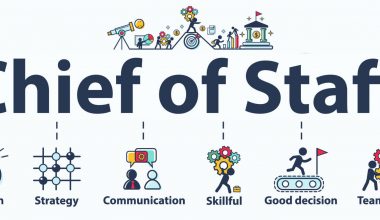In this digital age, people expect to be able to access their vital documents at any time, anywhere. The most effective way to make this process considerably easier is to use document management systems. The benefits of these document management systems cannot be overemphasized, as they help you manage and store your documents to enable you to access them anytime you want. In this guide, we’ll look at a list of the best electronic and open-source document management systems software to help you manage your documents effectively. Read on.
What Is Document Management?
Document management is the process by which companies manage and track electronic documents.
Document Management is now available in a variety of configurations ranging from a small stand-alone application to large-scale enterprise-wide installations that include typical document-filling functions.
These characteristics are as follows:
- Location of Storage
- Access control and security
- Indexing and auditing
- Search and retrieval, classification
- Integration with desktop software
Document Management Systems
Document management systems refer to electronic document management and access software.
Types of Document Management Systems
- Content management
- Workflow management
- Record management
- Document imaging
- Enterprise content management
Example of Document Management Systems
An example of a document management system is the PDF reader which allows you to store your files and access them offline.
Electronic Document Management Systems
Electronic document management systems (EDMS) are software programs that organize and store various types of documents. This is a more specific sort of document management system, a more general type of storage system that assists users in organizing and storing paper or digital documents. EDMS refers to a software system that manages digital documents rather than paper documents, while these systems may also handle digitally scanned versions of original paper documents in some cases.
Electronic document management systems (EDMS) software allow for the central storage of a significant number of digital documents. Many of these systems also incorporate document retrieval functionality. To be effective, an electronic document management system should include the following components:
- Import: This function opens a new document in the system.
- Storage: To keep system files and use storage.
- Identity: To accurately retrieve documents by assigning indexes.
- Export: To remove objects from the system, export them.
- Password security on specific files for permitted users.
The Benefits of Using Electronic Document Management Systems
Converting big mountains of paper documents to digital may be intimidating. Businesses that invest in an electronic document management system, on the other hand, give themselves the basis to assist in expediting workflows and scaling business-critical procedures. Here are the main benefits of electronic document management systems (EDMS) software for your business, in addition to increasing business productivity.
#1. Storage Space Reduction
Commercial property prices are rising, as is the cost of storing paper documents. A software-based DMS that can eliminate the need for file cabinets, boxes, and storage bins is a great asset to any business because it frees up valuable office space. Hard copies of documents can often be held in less expensive locations, such as an offsite warehouse or vault.
#2. Increased Security
Document security is crucial for enterprises of all sizes to protect sensitive data. DMS allows for more control over critical information, and document access can be managed at the folder level for different groups or people. A DMS also keeps track of who has viewed a document, when it was accessed, and how it was edited. Documents that are managed are highly traceable and can be labeled to enable automated warnings.
#3. Better Regulatory Compliance
Certain documents’ compliance requirements can be rather complex. Noncompliance can result in fines, license revocation, and, in some situations, criminal charges. Sarbanes Oxley and HIPAA are two federal and state regulatory rules that require tight security and privacy guidelines. Document management solutions lower the likelihood of noncompliance. Records retention schedules, for example, can be automated, and fresh records can be categorized and kept more readily.
#4. Document Retrieval Made Simple
Searching for and retrieving papers might take a long time – and we all know that time is money. The average office worker spends 30% to 40% of their day looking for printed documents, whereas companies spend $20 on average to file a document, $120 on finding a misfiled document, and $220 on reproducing a lost document. These wasteful document management expenditures limit an organization’s budget, impede productivity, and limit its potential for growth.
#5. Improved Collaboration
An advanced document management system substantially simplifies the ability to swiftly access content and collaborate. Documents acquired from various sources can be accessible from a variety of locations. Electronic imaging enables document sharing over a network via email or the Internet. DMS increases the visibility of business processes and allows for improved workflow monitoring. External users with authorization can be granted and monitored access.
#6. Better Disaster Recovery and Backup
A data backup and disaster recovery plan should be included in every document management solution. Paper documents are preserved from fire, floods, and other disasters with digital archiving as a backup. Documents in a DMS are highly traceable and can be traced using a variety of criteria. Document tracking capabilities lessen the possibility of misfiling or losing documents after reading.
#7. Increased Productivity
Time is valuable, and DMS saves time, which often translates directly into higher production. Faster and more efficient document retrieval can improve employee morale and client satisfaction. Furthermore, document management solutions are scalable to accommodate any enterprise’s evolving needs. A robust electronic document management system provides firms with a number of intangible benefits, including:
- Flexibility
- Competitiveness
- Improved client relationships
- Mind-set tranquillity
The Most Common Electronic Document Management Systems
Let’s take a look at some of the most prominent document management systems software that is commonly used to eliminate paper-based documentation and increase an organization’s document-based performance.
#1. ClickUp
ClickUp includes tools for creating documents, wikis, and knowledge bases, among other things:
- It has the ability to alter the text.
- It enables collaboration through multiplayer editing.
- It has options for document sharing and specific permissions.
- It provides text-highlighting features for adding comments to documents.
#2. Smartsheet
Smartsheet is a document management platform that is specifically built to meet the needs and demands of your business.
The software enables users to plan, manage, capture, and report on work from anywhere.
The software provides business teams with a live visual dashboard where they can remotely collaborate on a specific job.
Users can report on critical indicators and see real-time progress in their activities.
Smartsheet efficiently automates workflows to keep every team member informed and engaged as they work to complete their tasks on the platform.
#3. Teamwork Spaces
Teamwork Spaces provides document management software that is jam-packed with features that make task management easier.
You can edit your projects in a real-time collaborative environment with your colleagues using the software.
You may incorporate movies, photos, and charts into your documents to make them more engaging.
With the help of extensive permission and user management tools, you can control who has access to which parts of the document.
The platform also provides a wealth of options to assist users in effortlessly collaborating across teams and receiving client feedback.
#4. Monday.com
Monday.com is a cloud-based document management software that provides you with all of the tools you need to centralize and plan your project from start to finish.
The platform gives you customizable forms that you can use to quickly generate things.
It is also quite simple to use Monday.com to automate project approvals and activities.
You can also collaborate with your team members on a document in real-time using the platform. On a document, you can chat, assign changes, and tag individuals or groups.
The project dashboard provides you with detailed information, metrics, and insights into your work.
Furthermore, the real-time data provided by Monday.com regarding your work can be used to manage, monitor, and remove project hazards.
#5. HubSpot
HubSpot Sales Document Management and Sales Tracking Software will be useful for creating a sales content library for the entire team. It can enable you to share documents from your Gmail or Outlook mailbox. It will also notify you when prospects engage with the content you provide them. In addition, it will reveal how the sales content is assisting your sales process and how frequently the content is used by the team.
HubSpot offers an all-in-one Sales Software with several features such as Email Tracking, Email Scheduling, Sales Automation, Live Chat, Reporting, and more.
#6. pCloud
You can configure group permissions and individual access levels in pCloud. You can also restrict data access via shared folders. pCloud also allows you to leave comments on files and directories. It keeps thorough logs of account activity and makes any earlier version of your files available to you. It includes file management, sharing, securing, file versioning, file backup, and digital asset management features.
#7. Outdoors
It is a free and open-source ECM that offers document management, collaboration, knowledge and web content management, record and image management, a content repository, and workflow.
It supports the Common Interface File System (CIFS), which allows for document compatibility with both Windows and Unix-like operating systems.
Alfresco includes API support and functions as a back-end to store and retrieve content.
Alfresco’s strongest features, easy customization, and version control are also its most difficult to use.
#8. LogicalDOC
LogicalDOC is a Java-based open-source system that can be accessed using any web browser. This system is accessible via your own network and allows you to produce and manage an unlimited amount of documents. It improves the productivity and collaboration of document management systems.
#9 Feng Office
Feng Office is an open-source document management system with a web-based collaboration platform. Time tracking, Gantt charts, task management, and knowledge management are all useful elements of the Feng Office. It is simple to use and allows you to tag items. You can even track and send the content to numerous individuals at once.
The main disadvantage is that with each upgrade, some of its functions become paid-only.
#10. Nuxeo
Nuxeo is an open-source system that regulates content flow across the business cycle.
The tried-and-true technology decreases the time necessary for content search and retrieval. It offers several methods for capturing the contents, including image scanning.
Audit logging is one of the useful aspects of tracking content, and it is also a more convenient method. However, it is difficult for beginners, and modification can get complicated in some cases.
Read Also: FILING SYSTEMS FOR BUSINESS: How to File Documents Properly (Detailed Guide)
Open Source Document Management Systems
Whatever the size of your company, you will have a constant flow of documentation to develop, manage, and organize in order for things to run well. Document Management Systems (DMS) have become a vital component of a company’s software inventory, yet the majority of packages are expensive to purchase and maintain. Here is where open source document management systems come in. This low-cost (sometimes free) web software is widely available and an excellent answer for the majority of company processes.
Best Open Source Document Management Systems
#1. OpenDocMan
OpenDocMan was designed to meet the document management criteria of ISO 17025 and is widely regarded as one of the best open-source document management systems available. It is utilized for document management by an increasing number of Fortune 500 firms, small enterprises, education institutions, government agencies, and individuals. It is also accessible in ten different languages.
OpenManDoc is totally adaptable to your needs, supporting a wide range of operating systems and file types (including Linux, Unix, Mac OS X, Windows 2000, Windows XP, Windows 2003, Windows Vista, and Windows 7). It provides access from any location and simple web-based backup functionality as a fully web-based solution.
#2. Alfresco
This program deconstructs the Alfresco Enterprise Edition (content and file management software) for enterprises that can self-support and want to explore and adapt advancements for their own needs. Alfresco Community Edition is flexible for developers who want to work with the newest Alfresco features in non-critical contexts because it is free and readily available. This is the best open-source document repository for creating new features for your company.
Alfresco includes sophisticated user and workflow elements with easy-access capabilities that enable on-site and remote collaboration via mobile apps and offline access. It also includes a comprehensive set of collaboration capabilities such as team sites, task lists, and version tracking.
#3. LogicalDoc Community Edition
This is the free, open-source document management version of the LogicalDOC software, which is supported by developers, similar to the Alfresco software mentioned above. The LogicalDoc Community Edition is an open-source version that does not have all of the capability of the paid-for commercial editions, but it does include a lot of the basic functionality needed to get the most out of the software.
LogicalDoc Community Edition has a multilingual desktop interface and user-friendly features including multilingual full-text indexing, full version control, task management, importing from zip files, and document searching to help you keep control of your documents.
#4. Kimios
Kimios seeks to optimize document work as an alternative to large, cumbersome business management systems. It accomplishes this mostly by streamlining several tasks for easier day-to-day use.
The search functionality is one area where it has achieved this ease of use. It is an important aspect of this open-source document store. Each document’s content and metadata are indexed, so it may be found using full-text or boolean search queries. Kimios develops a powerful document search engine by combining numerous search parameters.
#5. OpenKM Community Edition
The last on our list of the best open source document management systems for your organization is OpenKM Community Edition. This is a great free option for tiny repositories and non-critical data.
Despite its free status, OpenKM Community Edition is adaptable to the majority of work situations. It is compatible with a wide range of operating systems and databases (including Windows Server, Debian, Ubuntu, Linux Mint, Red Hat, CentOS, Fedora, and others) (HSQL, H2, and MySQL).
Does Microsoft Have A Document Management System?
Yes, Microsoft has various document management systems like Microsoft Dynamics and SharePoint.
What Are the Three Functions of a Document Management System?
The three main functions of a document management system are to capture, store and distribute documents.
What is the Best Document Control Software?
The five best document control software includes:
- M-Files
- Templafy
- eFileCabinet
- Master control
- signNow
Does Microsoft have a Document Management System?
It does, indeed. For document management, Microsoft Office 365 offers a number of software options, such as SharePoint, Microsoft Dynamics, and OneDrive. According to each organization’s demands, any of the aforementioned options can be used.
What is the difference between CMS and DMS?
DMS: maintains structured data and primarily concerns itself with documents in the conventional sense, including Word, PDF, PowerPoint, Excel, etc. Web content (HTML, PDF files) and digital assets (pictures, audio, and video files) are examples of structured data that can be managed by a content management system.
What are the stages of the document management system?
A document’s lifecycle consists of its creation, storage, classification, metadata tagging, distribution or sharing, reuse, review and reporting, archiving, and eventual destruction.
What are the seven criteria for high quality documentation?
It is the responsibility of the provider to ensure that the notes they take are readable, reliable, exact, comprehensive, consistent, clear, and timely.
In Conclusion,
Document management systems help you to store and manage your documents effectively. We have given you a list of the best electronic and open-source document management systems you can use. However, we’ll advise that you do thorough research before making your choice.
FAQs On Document Management Systems
What are the components of a document management system?
Document capture, storage, metadata, versioning, security, indexing, and retrieval are all important components of a document management system.
What is the difference between document management and document control?
Document management is the process of storing, exchanging, and managing papers in order to increase the efficiency of your operations. However, document control is concerned with managing the flow of information and data within your organization.
Why is document control management important?
Document management helps an organization guarantee that only approved, current paperwork is utilized throughout the organization, avoiding the unintended usage of outmoded processes or procedures.
{
“@context”: “https://schema.org”,
“@type”: “FAQPage”,
“mainEntity”: [
{
“@type”: “Question”,
“name”: “What are the components of a document management system?”,
“acceptedAnswer”: {
“@type”: “Answer”,
“text”: “
Document capture, storage, metadata, versioning, security, indexing, and retrieval are all important components of a document management system.
“
}
}
, {
“@type”: “Question”,
“name”: “What is the difference between document management and document control?”,
“acceptedAnswer”: {
“@type”: “Answer”,
“text”: “
Document management is the process of storing, exchanging, and managing papers in order to increase the efficiency of your operations. However, document control is concerned with managing the flow of information and data within your organization.
“
}
}
, {
“@type”: “Question”,
“name”: “Why is document control management important?”,
“acceptedAnswer”: {
“@type”: “Answer”,
“text”: “
Document management helps an organization guarantee that only approved, current paperwork is utilized throughout the organization, avoiding the unintended usage of outmoded processes or procedures.
“
}
}
]
}
Related Articles
- DOCUMENT MANAGEMENT TOOLS: Uses, Free Tools & Guide
- BEST POLICY MANAGEMENT SOFTWARE: 2023 Reviews
- INTERMEDIATE ACCOUNTING: Simple Beginner’s guide
- ELECTRONIC MONEY: How It Works, Advantages and, Disadvantages
- EMAIL SYSTEMS FOR BUSINESS: 17+ Best Picks in 2023 (Detailed Review)






